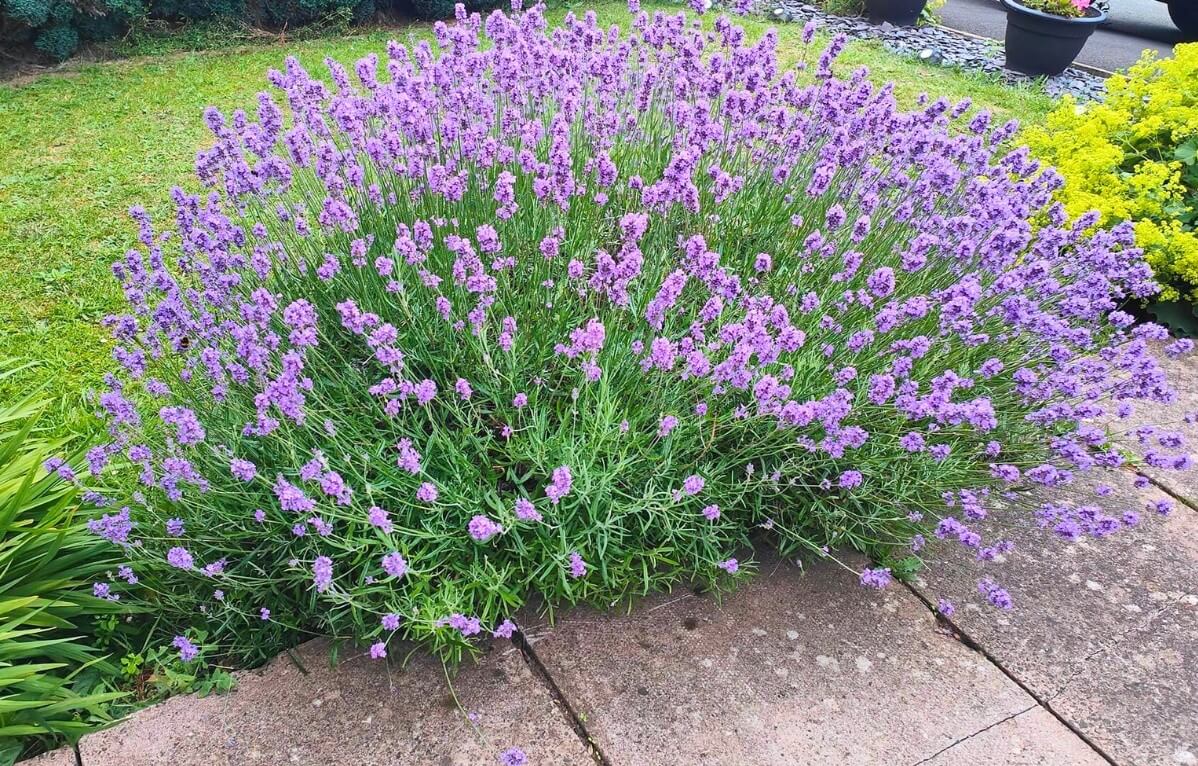I know I say this with many plants, but I love lavender. I love it because in moments of stress or anxiety, it comes to my rescue. I use it to make a soothing tea or place small sachets near my bed or desk.
There are several studies that have demonstrated the relaxing effects of lavender and it is also a nice plant to keep in the garden, as it’s colourful and it smells amazing!
Another interesting thing is that it’s a plant that grows well both in the soil and in pots, so you can easily move it onto patios, balconies or even indoors.
In the picture above you have seen my lavender plant and in this article I want to explain all the secrets to achieve that result. Remember to follow them carefully.
Choose the Right Lavender
In general, lavender thrives on little water and full sun, so it’s perfect even for busy gardeners or small spaces. I
The biggest keys are good drainage and sunshine, its a Mediterranean plant so use a dry, well-draining soil and giving it 6–8 hours of sunlight a day.
I can assure you that with the right care, even a potted lavender will bloom for years, and if I can do it, anyone can.
Beware of the Climate You Are In
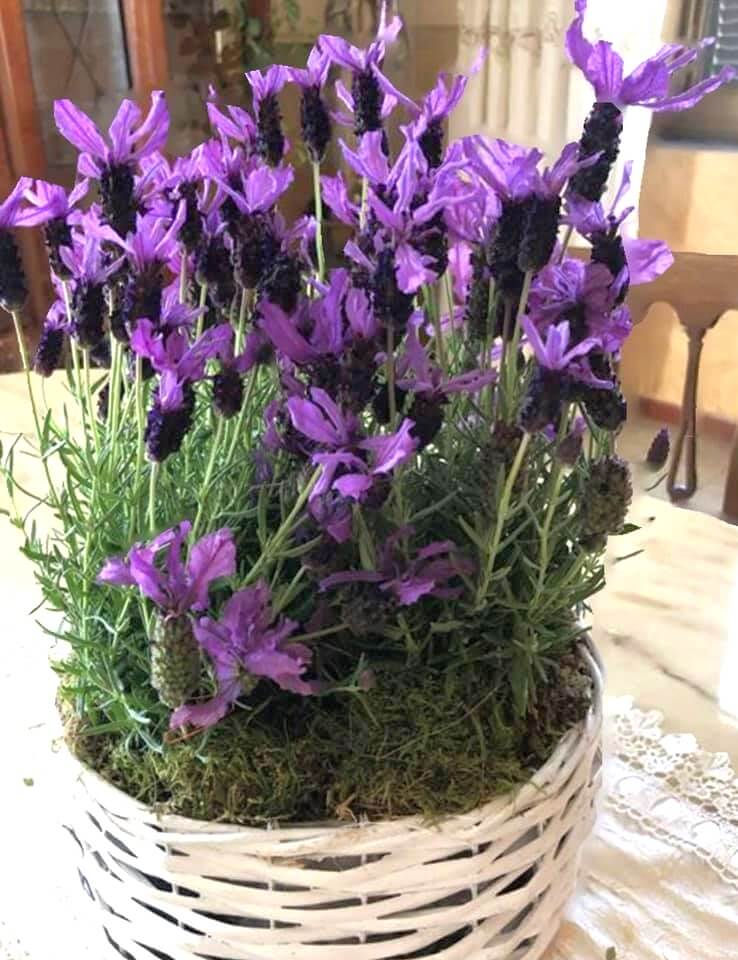
As with all plants, it must be said that not all lavenders are the same. Some English lavenders (Lavandula angustifolia) are very cold-hardy and compact, so ideal for northern gardens.
For example, compact cultivars like “Hidcote” or the dwarf “Thumbelina Leigh” grow only a foot or so tall and brim with dark purple, highly fragrant blooms.
On the other hand, Spanish lavenders (Lavandula stoechas), sometimes called French lavender, tend to love heat and humidity but are tender in winter.
Dwarf Spanish types like “Anouk” or “Silver Anouk” stay under 1–2 feet tall and they’re excellent container plants if you live in warm zones or are willing to move them indoors over winter.
In general, if you’ll use a pot, choose small and compact varieties labeled as dwarf or suitable for containers. Just ask a gardening centre attendant for help if you can’t clearly differentiate the varieties.
Planting and Potting
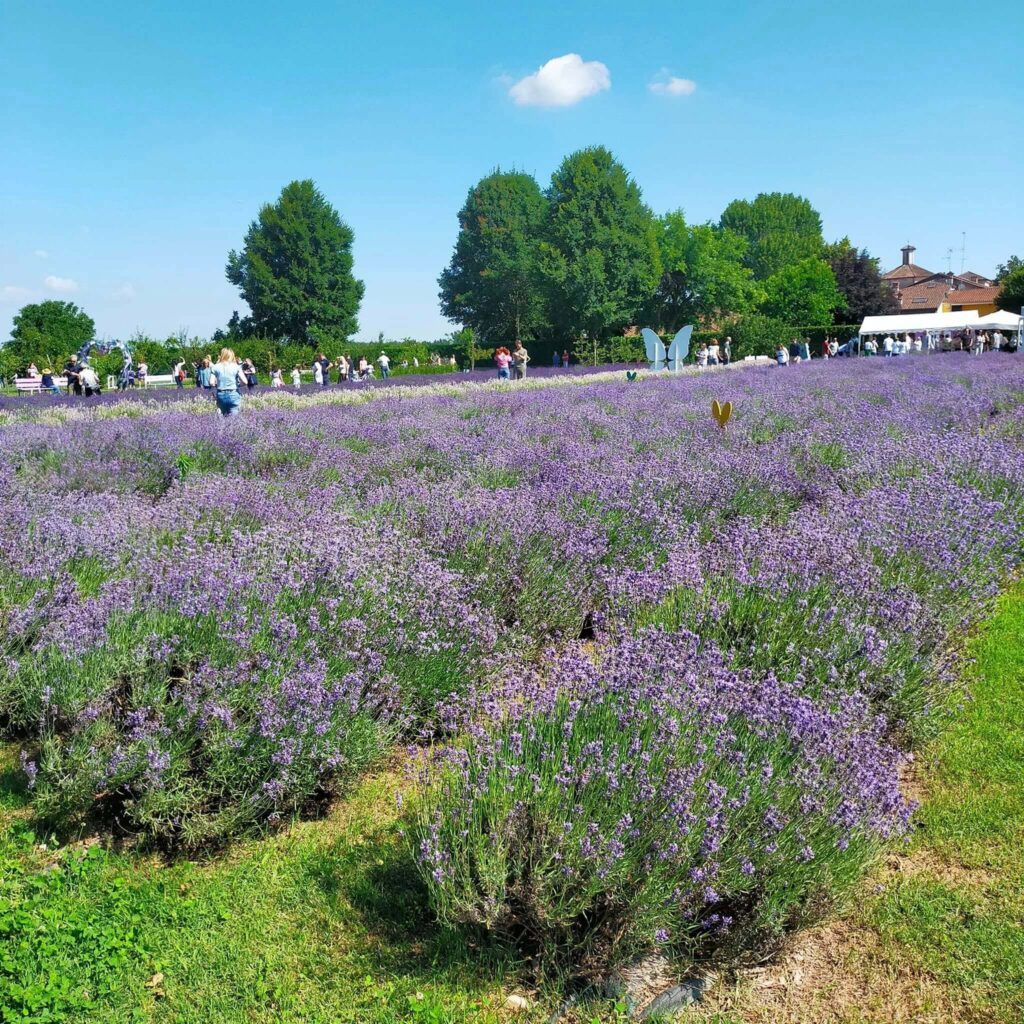
If you are going to use a pot, there are some crucial things you need to consider.
First, use a container that’s at least twice as wide (and deep) as the plant’s root ball. For example, I always recommend pots 12–18 inches in diameter or larger.
Secondly, pick a pot with ample drainage holes as lavender hates sitting in water.
As I said in the article about the best plants for terracotta pots, they are ideal because they breathe and let excess moisture evaporate, so use it if you have one.
Soil Mix
Now, whether you’re planting it in the ground or in a pot, make sure you choose the right soil.
Lavender needs a lean, gritty soil similar to its native Mediterranean home. Use a high-quality potting mix and amend it for drainage: blend in coarse sand, perlite, or small gravel.
A classic mix is 3 parts potting soil, 1 part coarse sand, 1 part compost, and 1 part perlite. Avoid heavy organic matter like peat moss or too much compost, as these retain moisture and can cause root rot.
PRO GARDENER: Lavender prefers neutral to slightly alkaline soil so adding a bit of dolomite lime can boost the pH if needed.
Plant at the Proper Level
Gently remove the lavender from its nursery pot and lace it in the soil so that the top of the root ball sits about 1 inch below the rim.
Fill around it with your mix, firming lightly to remove large air pockets. Make sure the plant is planted at the same depth it grew previously (do not bury the crown or leave roots exposed).
Water thoroughly after planting to settle the soil around the roots, and if you can, place the pot in a sunny location. A south or west-facing spot is usually best.
I won’t reccomend growing it indoor during the summer cause it needs a lot of light. But if you have no other choice at least put it right next to a bright window.
Water Wisely
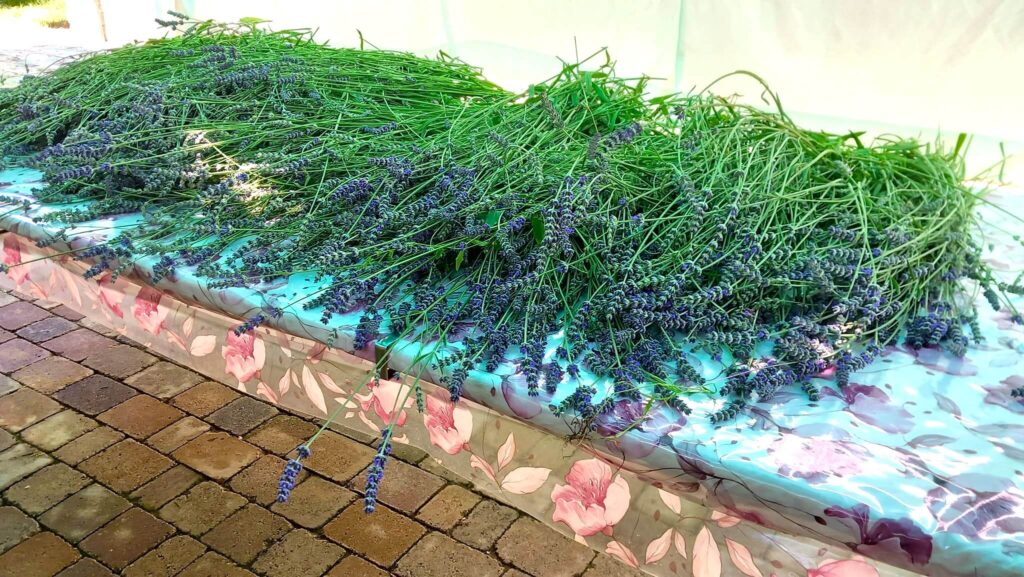
Water the newly planted lavender well, but afterwards water sparingly.
Lavender is drought-tolerant. It prefers the soil to dry out almost completely between waterings.
Like I always say, check the soil about 1–2 inches deep and only water if it feels dry. And remember to pay attention to the most common watering mistakes.
Other Things to Consider for Lavender
In terms of fertilization, consider that lavender grows in poor soils, so fertilize very lightly if at all. A balanced slow-release fertilizer in spring is usually enough.
You should also avoid high-nitrogen fertilizers, which encourage leggy green growth at the expense of blooms.
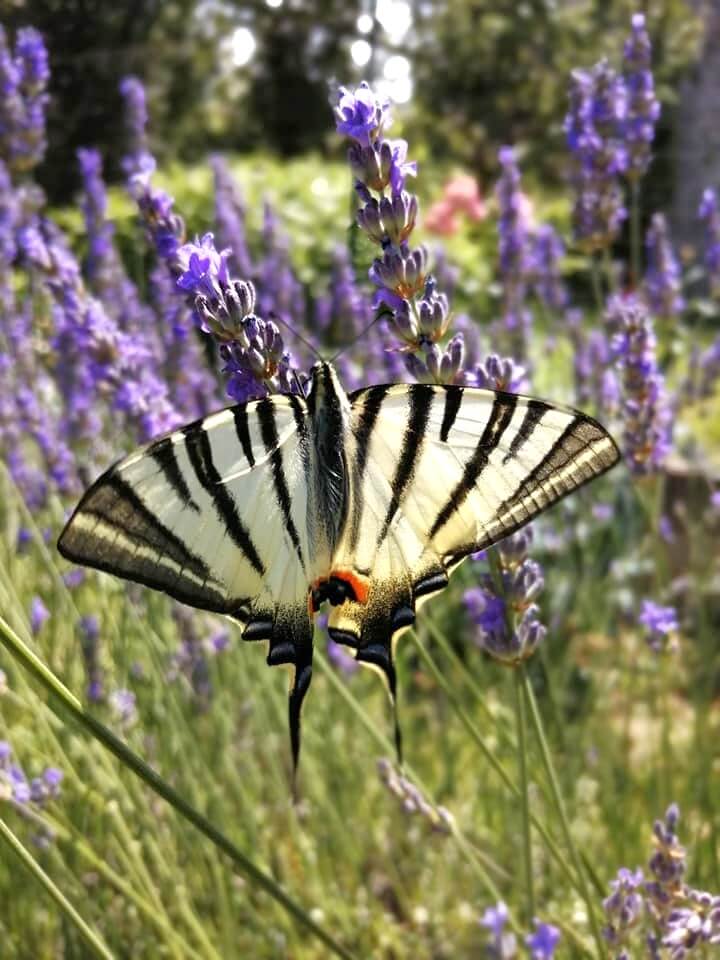
In addition, to keep your lavender bushy and blooming, prune it regularly. After the first flush of flowers, remove spent blooms to encourage more flowering.
Then, after the plant has finished blooming (usually late summer), cut each stem back by about one-third.
Make the cuts above leafy (green) growth, and do not cut into the old woody base because lavender won’t regrow from old wood.
As you probably can understand by now, in winter lavender is more vulnerable, especially the pots compared to the ground-grown plants.
If you live in a cold area or grow a tender Spanish/French lavender, move the pot to a sheltered spot (unheated garage, shed, or covered porch) for winter and keep watering to a minimum.
The last thing that I wanna say is that lavender can also be part of a weed-resistant garden if combined with mulch or planted among other ground-covering plants. You can plant it with one of the perennial flowers that naturally crowd out weeds.

